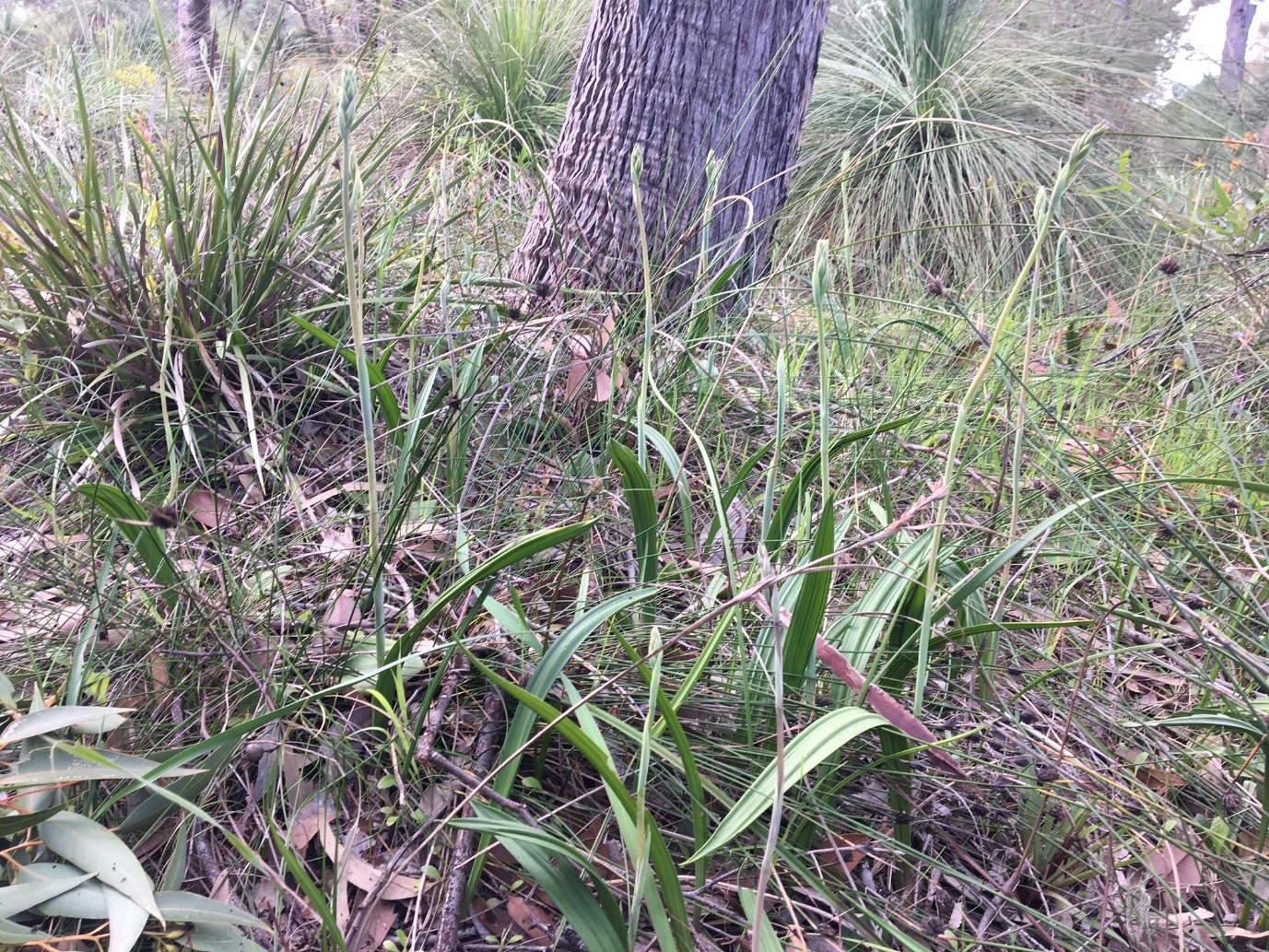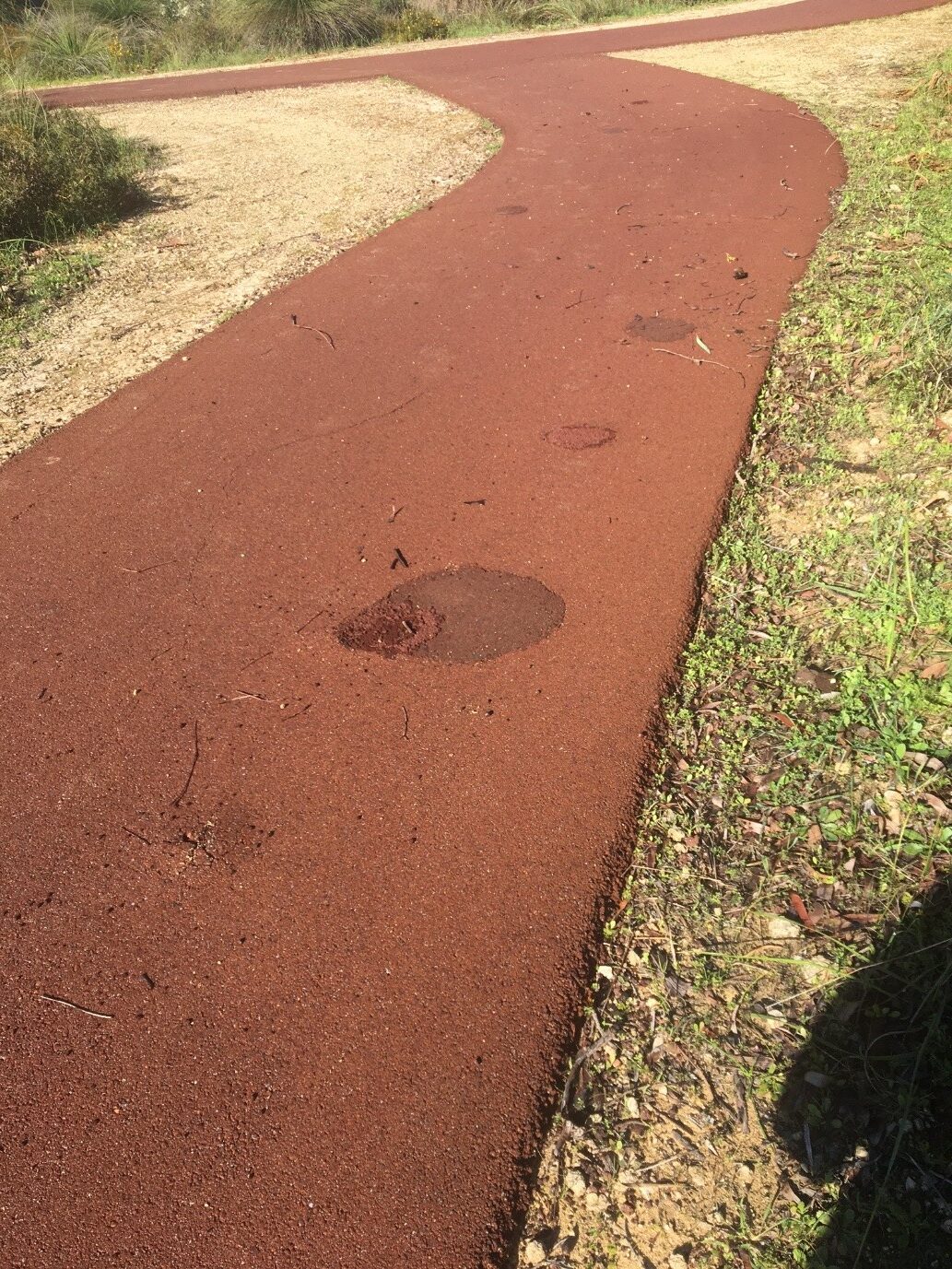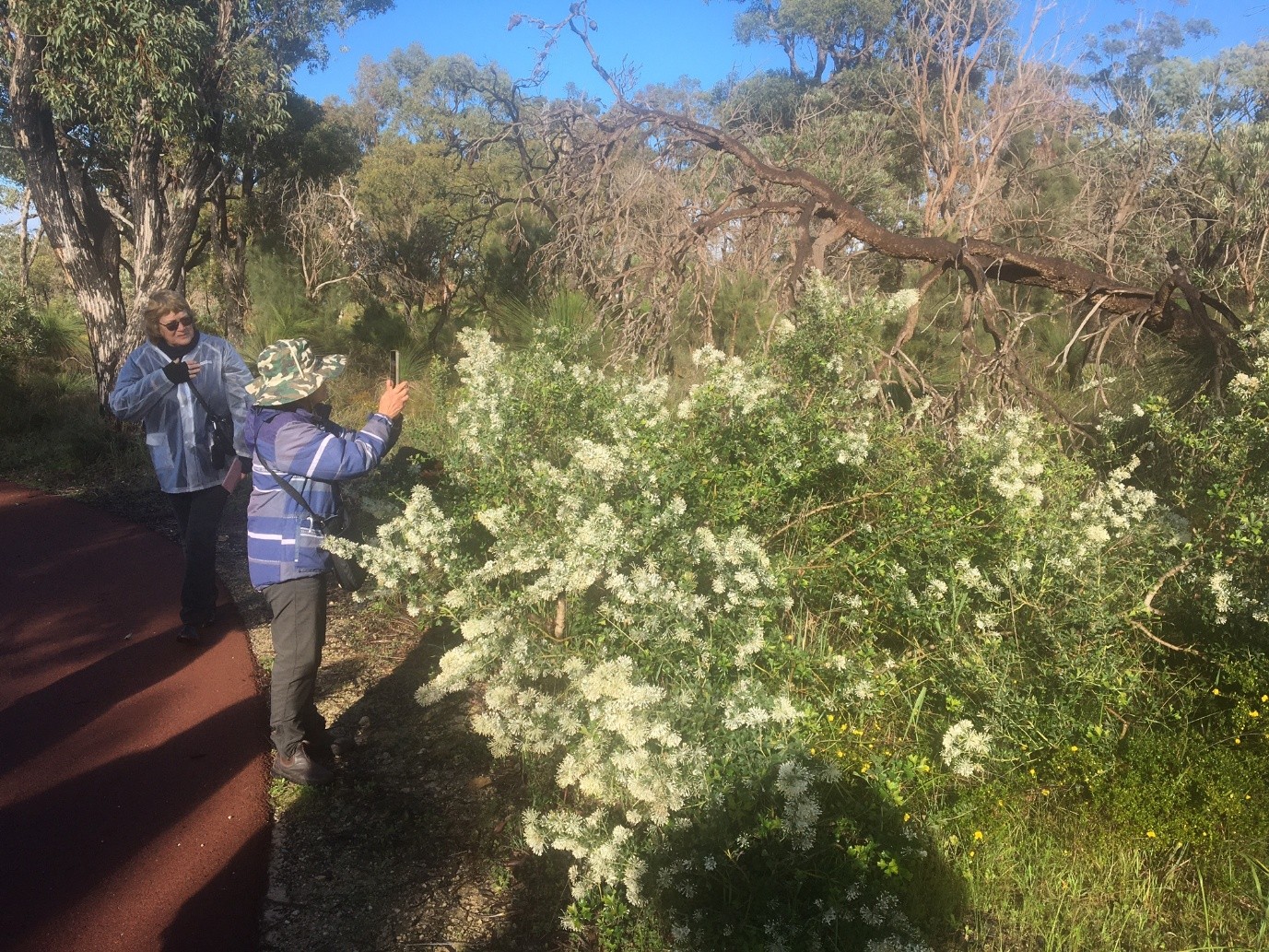Northern Suburbs Branch, 27 August 2025
Our best turnout for the year. Seventeen members and visitors attended our walk led by Dr Mark Brundrett, one of the founding members of the Friends of Warwick Bushland more than 20 years ago.
Mark chose the recently revamped Jarrah Trail, one of several available trails, for our walk. The Jarrah Trail has been designed and constructed as a learning resource, featuring 20 Points of Interest (POI) and four interpretive signs. Each POI has a QR code which provides access to natural history information.
The reserve is well known for its blue sun orchids, which Mark said were uncommon in the past but have spread rapidly in recent years. It was too early for the flowers to be in bloom, but we saw large patches of leaves under the Jarrah trees near the entrance. (A visit in mid-September showed they were about to flower).

Another “blue” plant, which was more widespread, was the Blueboy (Stirlingia latiflora). However, the name historically refers to its seeds turning the early settlers’ plastered walls blue, rather than the colour of its flowers, which are yellow-brown-red.
As we proceeded along the path, we noticed numerous cracks and patches in the compacted gravel path. Mark explained these were due to “dog poo” fungi (Pisolithus sp.) exerting hydraulic pressure from underneath.
Circular patches in path indicating location of dog poo fungi – Image by Don Poynton

Although some native plants will always be in flower, September and October are the best times to visit. Hence, we were too early to see most of the 217 species that have been recorded in flower so far. Golly, who would have guessed that many! Two of the most notable bushes in flower were the Basket Bush (Spyridium globulosum) and the White Grevillea (Grevillea vestita).

Two species of Daviesia were flowering while Purple Tassels (Sowerbaea laxiflora) were beginning to bloom.
Orchids in flower were noticeably absent. We only spotted three Pansy Orchids, one Dancing Spider Orchid and a patch of Snail Orchids. Mark agreed that the late flowering season was common in many reserves this year.
To end the walk, Mark discussed the results of his research into the effects of fire on orchids in our urban bushlands. The following is extracted from his recently published paper*:
A 72-year fire history map was intersected with >1000 orchid locations and transects.
Brundrett Mark C. (2025) Orchid losers and winners after fire in West Australian urban bushland: a response continuum deeply integrated with other traits. Pacific Conservation Biology 31, PC25045. https://doi.org/10.1071/PC25045
Orchid survival, flowering, pollination, and germination were measured post-fire
relative to long unburnt areas….
Orchids had diverse fire outcomes from catastrophic to beneficial…..
Many orchids prefer long unburnt areas, are intolerant to fire, or can be harmed by a seasonal fires.
Thus, fire must be carefully managed in their habitats.
Mark and his partner, Karen Clarke, along with other members of The Friends of Warwick Bushland, have designed an extremely informative website featuring comprehensive lists of trees, plants, fungi, birds, minibeasts, and other animals. The photos, taken mainly by Mark, are outstanding – recommended viewing. Check out the Web of Life.
Don Poynton

